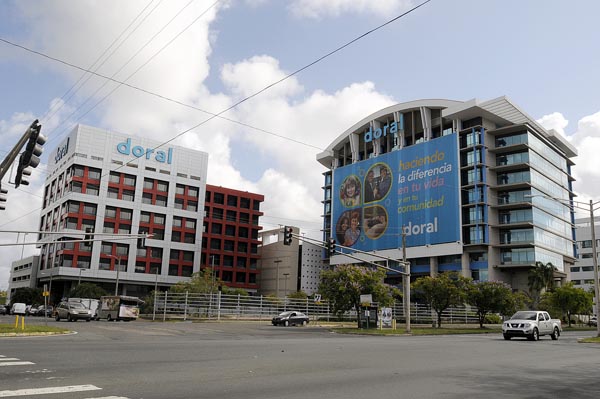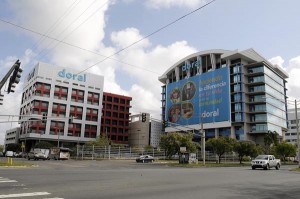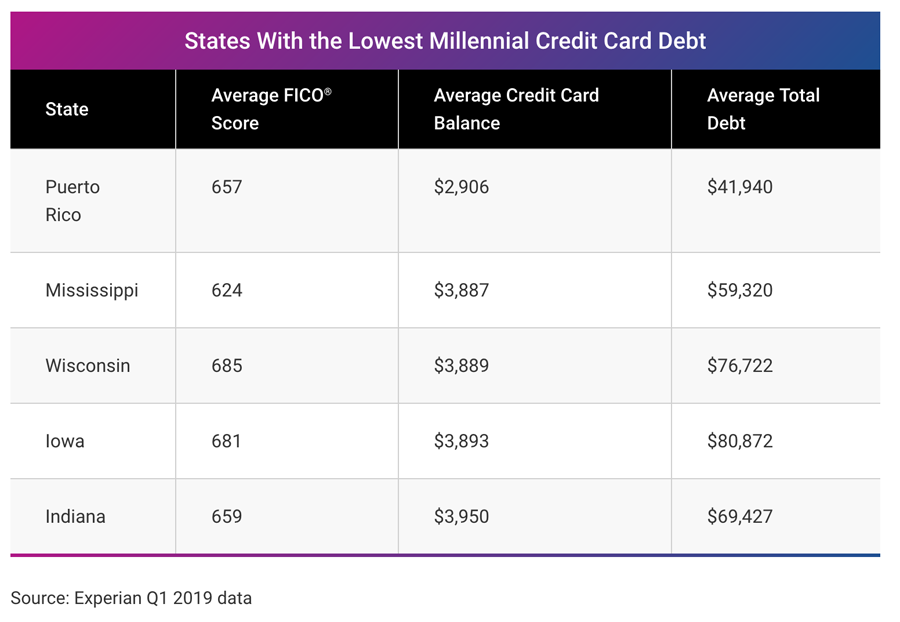S&P cuts Doral Financial rating, gives negative outlook


Doral Bank is required to maintain higher regulatory capital ratios because of its consent order with the FDIC. (Credit: © Mauricio Pascual)
Citing Doral Financial Corp.’s “weakened capital position and very high nonperforming assets,” Standard & Poor’s Ratings Services lowered its issuer credit rating for the bank to ‘CCC-‘ from ‘CCC+,’ with a negative outlook.
“We believe the bank is at risk of breaching the required regulatory levels given its very high nonperforming assets,” S&P said. “We are lowering our issuer credit rating on Doral Financial Corp. to ‘CCC-‘ from ‘CCC+’.”
“The negative rating outlook on Doral reflects our view of the loan portfolio’s weak credit quality, the bank’s restrained core profitability, the poor economic conditions in Puerto Rico, and the bank’s regulatory capital, which is narrowly higher than regulatory minimums,” the agency said.
Doral Bank is required to maintain higher regulatory capital ratios because of its consent order with the Federal Deposit Insurance Corp., and its total risk-based capital ratio is only 80 basis points above the requirement, S&P noted.
“Our revision of Doral’s capital and earnings score to ‘weak’ from ‘moderate’ is responsible for one notch of the two-notch downgrade. We also believe that Doral’s asset quality compares unfavorably with its Puerto Rican peers’, which led us to lower the rating by another notch,” S&P further noted.
On Sept. 11, 2012, Doral Financial entered into a written agreement with the Federal Reserve Bank of New York, which replaces and supersedes the cease and desist order that Doral entered into with the Board of Governors of the Federal Reserve System in 2006.
The written agreement requires the company to take numerous actions, including supporting Doral Bank to ensure it complies with any supervisory actions that the federal and state regulators take, S&P said, citing earlier regulatory actions involving the bank.
Doral Bank entered into a consent order with the Federal Deposit Insurance Corp. on Aug. 8, 2012.
On Monday, Glen Wakeman, CEO of Doral Financial Corp., said, “We remain optimistic about Doral prospects. In the past six years, we’ve raised nearly $1 billion in capital, isolated and decreased our problem assets, diversified our business creating a growing profitable platform in the U.S., and continued to grow our mortgage and retail franchise in Puerto Rico.”
‘At risk of breaching’ regulatory requirements
“In our opinion, these regulatory actions and the associated costs could hurt Doral’s already weak earnings capacity. Doral is required to keep higher capital levels because of the consent order. As of Sept. 30, 2012, the bank’s total risk-based capital ratio is 80 basis points higher than the minimum requirement of 12 percent,” the agency noted.
“At this level, we believe the bank is at risk of breaching its regulatory requirements in case of plausible adverse developments, which, in our view, could eventually trigger regulatory intervention,” S&P predicted. “Doral’s risk position is ‘weak,’ in our opinion.”
“We believe the bank’s credit deterioration mainly results from Puerto Rico’s high unemployment rates and economic challenges, and we believe there will be very little to no improvement over the next two years,” S&P said.
Residential real estate mortgages make up more than half of Doral’s total loans and the majority of its nonperforming assets. Most of those mortgage loans are secured by single-family residences. Doral’s nonperforming assets (including restructured loans and loans that are 90 or more days past due) represented about 22.1 percent of total loans as of Sept. 30, 2012.
“Although this ratio has declined over the past few years, it remains much higher than its peers. The bank charged off $111.6 million of loans in the first nine months of 2012, which translated to a higher net charge-off ratio of 2.32 percent of average loans, compared with 1.41 percent one year ago,” S&P noted.
Furthermore, the bank took higher loss provisions of $154.8 million to build reserves against future losses.













